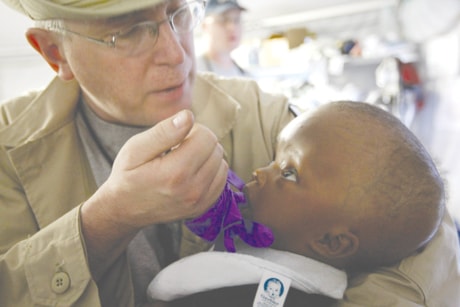So many doctors are answering Haiti’s call for medical aid that the largest hospital in Port-au-Prince has a new problem: organizing and finding good use for them all.
“I think there is a lot of confusion,” said Marivittoria Rava, a longtime volunteer with the charity Friends of the Orphans, which runs a children’s hospital caring for some post-operative patients from the general hospital.
Rava said that medical supplies and resources have improved, but the crush of volunteer doctors in Port-au-Prince can complicate treatment in the city while there is great need for help in other places hit by the earthquake.
The general hospital has nine operating rooms, but a near platoon of volunteer surgeons. That leaves many standing by for work, though there are relatively few nurses.
CNN’s Dr. Sanjay Gupta learned medical teams are taking their first steps to organize and see how many of them are needed. Representatives from each volunteer doctor group at the general hospital gathered for a quick, to-the-point meeting over the weekend.
“We are all well-staffed,” Dr. Paul Auerbach of Stanford University told the group. “The issue is co-ordinating.”
Auerbach is the point person to try and control the surge of doctors. Over the weekend, he and volunteer groups started tackling some basics of treatment: how to ID patients, keep records and make rounds.
Among the problems with the large number of doctors, Auerbach said, is that patients can have their dressings opened three or four times in close succession as one and then another crew of doctors come to evaluate their wounds.
To change that, charity groups have set up shifts and literally drawn lines, sketching maps on hospital walls showing who is working where. They are also identifying medical centers outside Port-au-Prince, where there is need for the booming supply of doctors in the capital.
Space is also an issue. A team from the U.S. Army Corps of Engineers is carefully assessing the buildings that survived on hospital grounds, trying to find a stable place for post-operative care. Patients now recover in tents or are taken to other hospitals.
As the city’s main hospital is brimming with doctors, it is in need of nurses and physical therapists.
Thousands of amputees will need significant, specialized help from physical therapists, but few are available.
Nurses are in short supply. A nursing school on the grounds of the general hospital was crushed in the earthquake, killing some of the people who would be giving care now. The flood of outside volunteers is mostly doctors, not nurses.
Interactive map of where to find aid, hospitals in Haiti
At one point over the weekend, a mass of 12 medical workers gathered around a tiny premature infant. Someone called out, “If you’re not a doctor, step away!”
Immediately someone else responded, “We’re all doctors!”
Even as they juggle an abundance of doctors, many volunteers said they worry the general hospital in Port-au-Prince could again face dire need after this first wave of medical staff rotates out of Haiti over the next two weeks.
Those on the ground advise doctors who want to help Haiti to wait and volunteer in a few weeks or months.
